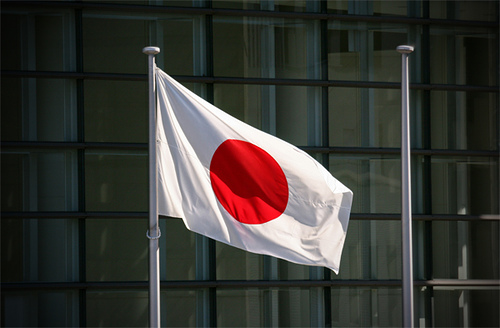On this day in 1999, the Act on Japan’s National Flag and Anthem was established. It meant that the Hinomaru and “Kimigayo” were formally established as the country’s national flag and anthem just 25 years ago. Of course, the history of these two symbols goes back a lot further than a quarter of a century. So, for our latest List of 7, we’re looking at some facts about the two of them.
1. “Kimigayo” is one of the world’s shortest anthems
“Kimigayo” (“His Imperial Majesty’s Reign”) is known to be one of the world’s shortest national anthems. It’s an 11-bar composition that is finished in less than 45 seconds when played with♩=60. By contrast, Uruguay’s anthem — now considered the longest since Greece shortened its anthem — is more than five minutes long. The Japanese anthem has just 32 characters. They are:
Kimigayo wa
Chiyo ni yachiyo ni
Sazare-ishi no
Iwao to narite
Koke no musu made
Translated into English:
May your reign
Continue for a thousand, 8,000 generations,
Until the tiny pebbles
Grow into massive boulders
Lush with moss
2. It also has the world’s oldest lyrics
As well as being one of the shortest national anthems, “Kimigayo” also has the oldest lyrics. They come from the Kokinshu — an anthology of the waka form of Japanese poetry — published in the 10th century. Written by an anonymous poet, it originally began with the words, “Waga Kimi wa” (“my lord”) instead of “Kimiga Yo wa” (“my lord’s reign”). After being used as a festive song among samurai during the Kamakura period, it grew in popularity during the Edo era. Following the Meiji Restoration, it was adopted as Japan’s de facto national anthem.
3. John William Fenton’s melody was rejected
The melody for the song was chosen in 1880. Eleven years earlier, John William Fenton, a visiting Irish military band leader, suggested that it was about time for Japan to create a national anthem. He was then asked to come up with a melody himself and present it to Emperor Meiji in 1870. His effort, however, was rejected, as it was considered to be “lacking in solemnity.” A decade later, the Ministry of the Imperial Household adopted a different melody arranged by Yoshiisa Oku and Akimori Hayashi under the supervision of Hiromori Hayashi. Franz Eckert composed the harmony.
4. The official name of the flag isn’t Hinomaru
The Japanese flag is officially known as Nisshoki (flag of the sun), but it’s more commonly referred to as Hinomaru (the circle of the sun). It symbolizes the importance of the sun in Japanese culture, with Amaterasu — the sun goddess — considered the chief deity of the Shinto pantheon. The sun’s significance can also be seen in the nomenclatures “Nihon” and “Nippon,” which both mean “the sun’s origin.” In 607 CE, an official correspondence was sent to Chinese Emperor Yang of Sui that began with the words, “from the emperor of the land of the rising sun.”
5. The earliest recorded use of the Nisshoki dates back to 701 CE
The exact origin of the flag is not known, though, according to the Japanese history text Shoku Nihongi, a design resembling the sun motif flag (in gold) was reportedly used by Emperor Monmu during a New Year’s greeting ceremony in 701 CE. There are several other legends related to the national flag, including one attributed to the Buddhist priest Nichiren, who allegedly handed a sun banner to the shogun to carry into battle during a Mongolian invasion in the 13th century. One of Japan’s oldest flags, meanwhile, is said to be housed at Unpoji Temple in Koshu city, Yamanashi Prefecture.
6. Permission was needed to fly the flag during the Occupation
In 1854, the use of the Nisshoki was mandated on ships to distinguish Japanese vessels from foreign ones and, after the Meiji Restoration, it became the de facto flag of Japan. The flag instilled a deep sense of national pride among its citizens and was present at celebrations following victories in the First Sino-Japanese and Russo-Japanese wars. It became closely linked with Japanese militarism and nationalism during WWII. However, after the conflict, permission from the Supreme Commander for the Allied Powers (SCAP) was needed to fly the flag. These restrictions were later relaxed.
7. The 1999 bill was proposed after a high school principal committed suicide
In 1999, a debate over the use of the Nisshoki and “Kimigayo” in Sera High School led to the suicide of principal Toshihiro Ishikawa. His teachers were opposed to a decree by the Hiroshima Prefectural Board of Education demanding that all principals utilize the two symbols at every school ceremony. Unable to satisfy both sides, Ishikawa took his own life. The government subsequently drafted a legislation to make the Nisshoki and “Kimigayo” official symbols of Japan. The House of Representatives passed the bill on July 22, 1999, by a vote of 403 to 86. It was enacted on August 13.








